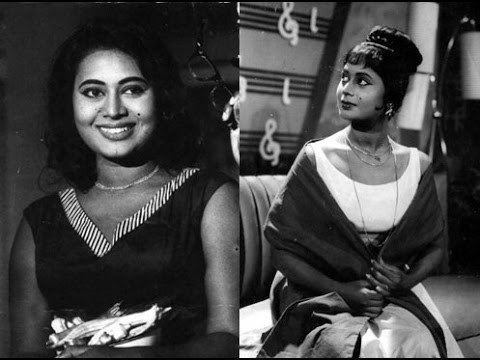Sandhya Kumari was one of the central players in the golden age of Ceylon cinema in the 1960s. Emotive, expressive, and with a commanding presence, the actress held her own; acting alongside greats of the silver screen such as Gamini Fonseka and under the direction of the likes of Titus Thotawatte.
Her career featured more than 50 starring roles including classics of the period such as Adata Wadiya Heta Hondai, Sapatha Soya, and Deewarayo.
Her other films include Patachara, Ipadunay Aiye?, Ran Rasa, Sura Chowraya (1967), Akka Nago, Amathikama, Ataweni Pudumaya, Bicycle Hora, Hangi Hora, Pini Bindu (1968), Kawda Hari, Sooraygeth Sooraya (1969; which featured a fight sequence between her and Sonia Dissanayake) and Sakuntala (1977).
Sandhya Kumari though, prematurely passed away in 1994 aged just 49. Born in Kotahena on 6 January 1945, Jayasuriya Arachchige Dona Mary Yvonne Perera was later christened Sandhya Kumari following her first starring role.
Her ability to captivate audiences with her versatile acting and onscreen persona was admirable, as were her striking features that made her one of the initial sex symbols of local cinema culture.
Sandhya Kumari’s gaze was a part of her legacy as a servant of the silver screen, expressing nuanced and at times even subtle expressions through her eyes alone. Her roles were mainly contained to commercial films when her range allowed her to tackle more mature and dramatic roles.
Sandhya revealed that she was even preferred by Lester James Peries to play the role of Sarojini in his 1967 film Ran Salu. She ended up turning down many of those roles due to her familial commitments and at times due to the disapproval of her then husband, Upali Perera.
Even as a sex symbol of the era, Sandhya maintained a self-conscious and neutral public image and thus forewent a foray into more serious work, even missing out on the possibility of subsequent international recognition. Many of the roles Sandhya Kumari would have been considered for eventually went to Malini Fonseka.
Sandhya was also one of the fortunate few who acted alongside actors that represented the two golden eras of Ceylon cinema. Firstly, acting alongside contemporaries such as Tony Ranasighe and Ananda Jayaratne, and then in the company of an older breed such as Rukmani Devi and D.R. Nanayakkara. Some even claim Sandhya Kumari was where the transition was made and it was through her that the golden age of the 60s was ushered through. Yet, through her fame, she balanced her public and personal persona in such a manner that was embodied by her humility – a quality that came to define her person on and off-screen.
Her embodiment of an actress of a golden age to this day continues to carry on and live through her legacy.
Credit – Wikipedia, Sandhya Kumari Facebook Page, Sukumar Shan



















Loading…
Loading…